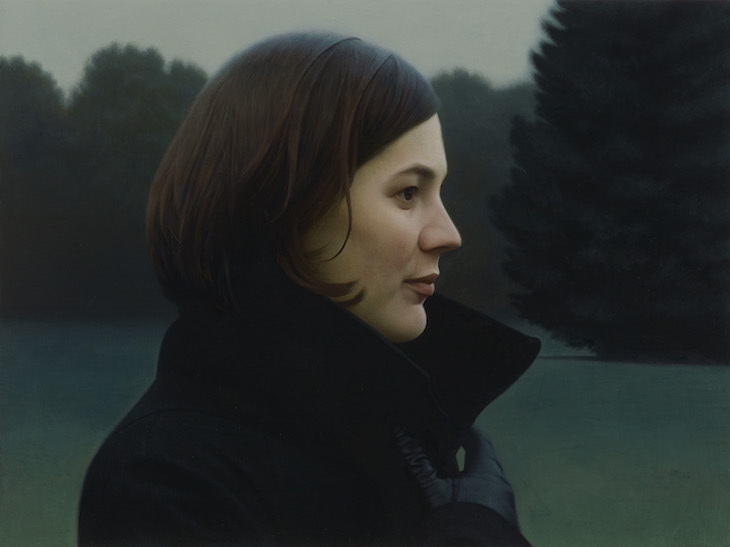Now in its eighteenth year, the BP Portrait Award celebrates the best of portraiture and offers the rare opportunity to see a collection of the best portrait work from around the globe.
The curation of the exhibition presents interesting contrasts and manages to draw together threads of coherency in this densely-packed space. Brian Says’ compact ‘Portrait of Kane’, which reproduces the minutiae of the model’s expression in intense detail, hangs opposite ‘Dr Tim Morton’ by Lucy Stopford. Stopford’s piece also focuses on the face alone, but is larger than life and suggests expression in broad bold brushstrokes, rather than exact recreation.
Rounding a corner, John Burke’s portrait of his friend Pen Vogier is arresting in the rich buttery-ness of her dress standing out against the flat background. Nearby in Danile Coves’ ‘Blind Portrait’ is another portrayal of lustrous cloth, albeit silver this time instead of yellow. We are told that he is inspired by Vermeer, yet there is also something of Rossetti’s ‘Ecce Ancilla Domini!’ in the model’s stance and auburn hair.
Placing third in the competition is Antony Williams’ ‘Emma’. The painting is unique in the exhibition for its use of egg tempera as a material. Standing out amongst the acrylic and oil portraits, the model emerges in wisps of delicate yellow, red and green. The starkness of the dark background is juxtaposed against the vulnerability of her nude form and the light tones of her hair and skin. The description accompanying the portrait informs us that the subject, for whom the piece is also named, has been Williams’ model for eleven years, and that this will be their final collaboration. The provision of this information alongside each painting is very effective, communicating the often poignant significance to the subjects and scenes.
Thomas Ehretsmann’s acrylic on board ‘Double Portrait’ [pictured] was awarded the second prize of £10,000 by the judges. In a departure from more traditional formats, this piece is one of the very few in the exhibition which is landscape and presents its subject in side profile. This depiction of his wife and unborn child manages to capture and enhance an unusual flat natural light with rich glossy tones, creating a striking, high contrast image.
The intimate family portrait ‘Breech!’ by Benjamin Sullivan took first place. Sullivan’s portrayal of his semi-nude wife nursing their child won praise from the judges for its evoking of ‘Madonna and Child’ iconography. However, this image is softer and feels more real than the idols of previous ages. The scene is made up of warm, earthy tones and the nursing mother’s shape is of gentle slopes, rather than the stiff geometry of the traditional Madonna.
Though these are all impressive, highly evocative pieces, it is somewhat disappointing that all three winning pieces depict a female muse through the male gaze. The judges have missed an opportunity to make a more radical and progressive statement in their choice; instead it seems that in 2017 women were still represented only as mothers, wives and models, painted by men.
Until 11 March 2018
Scottish National Portrait Gallery
Photo credit: National Galleries of Scotland

